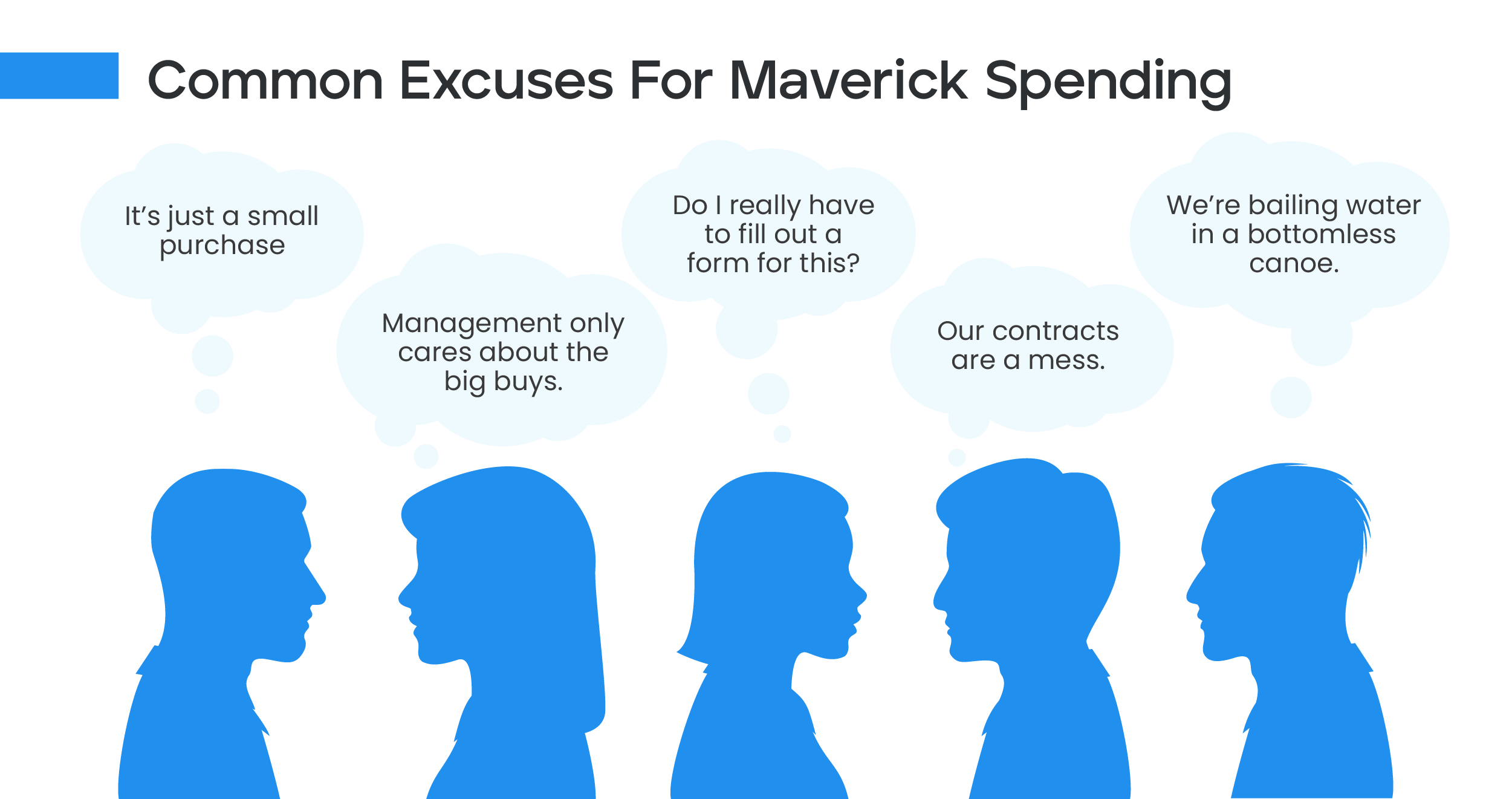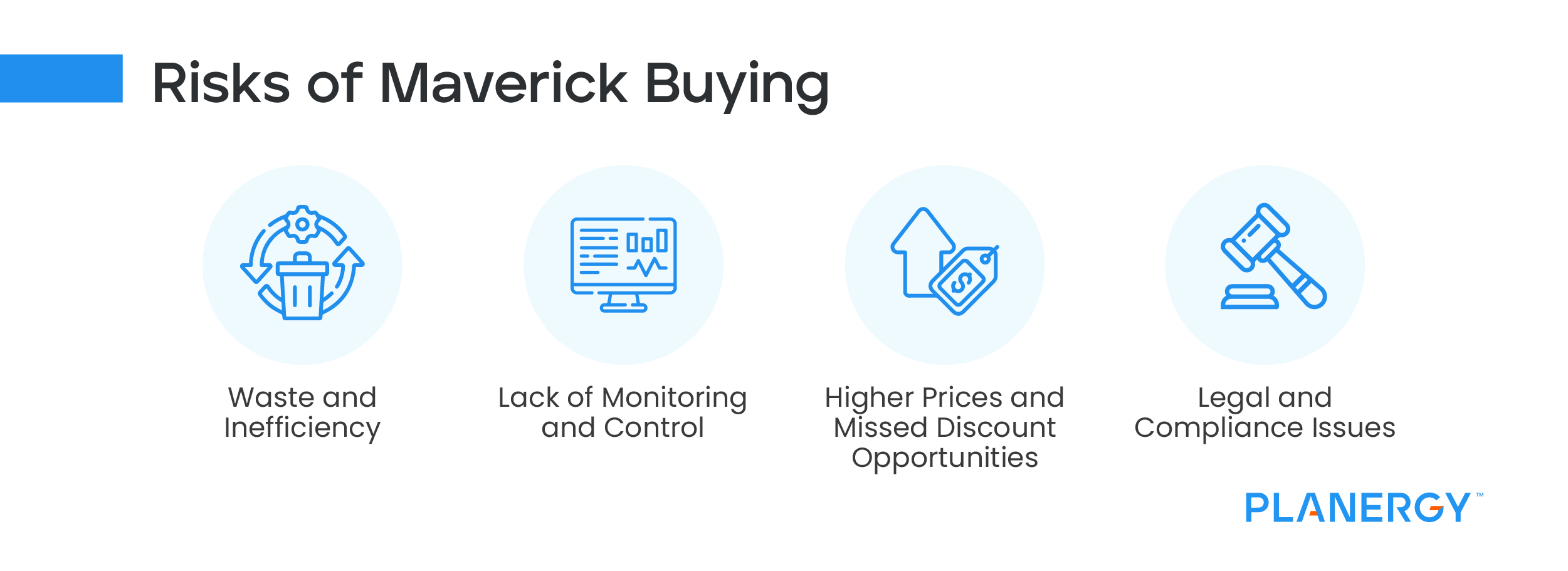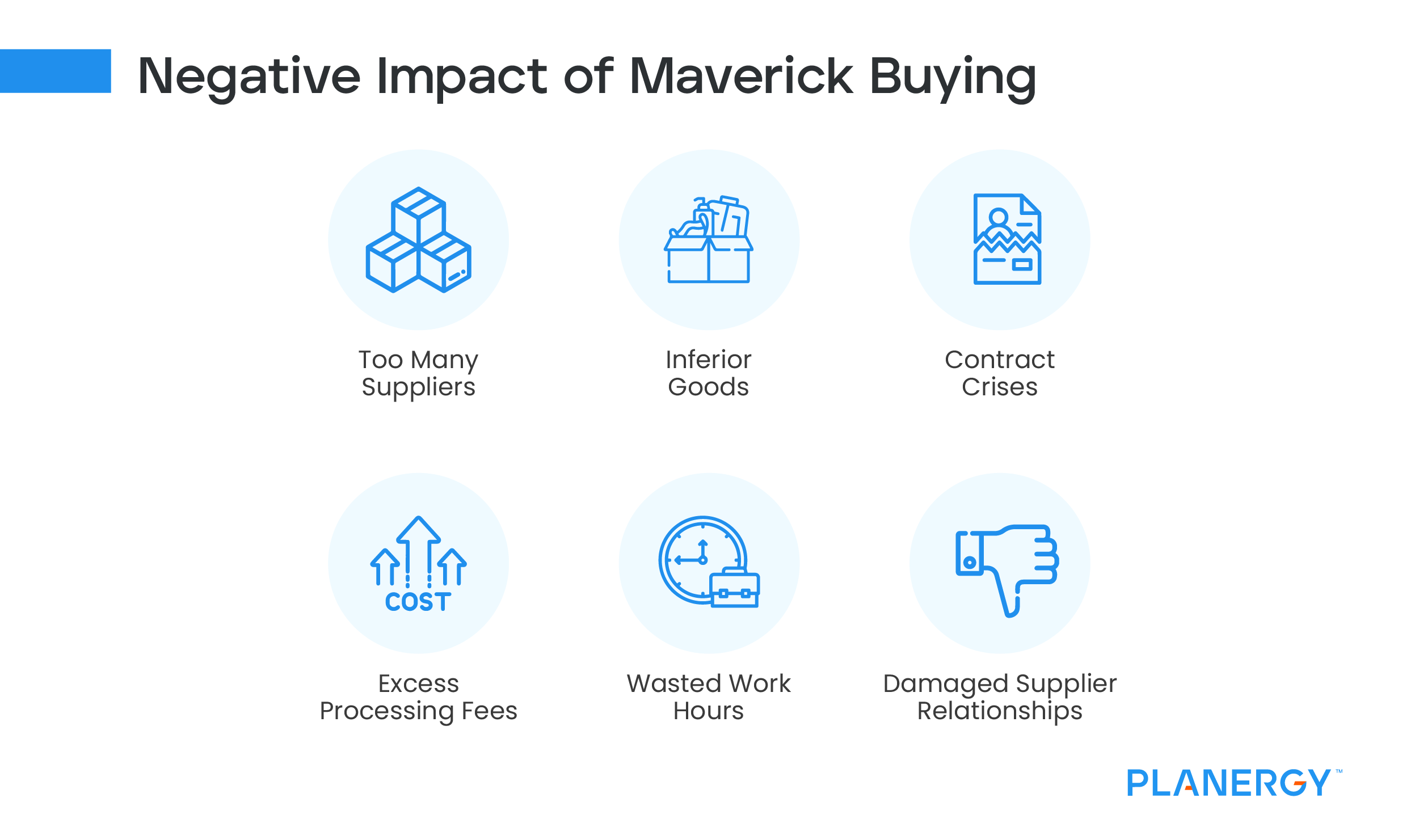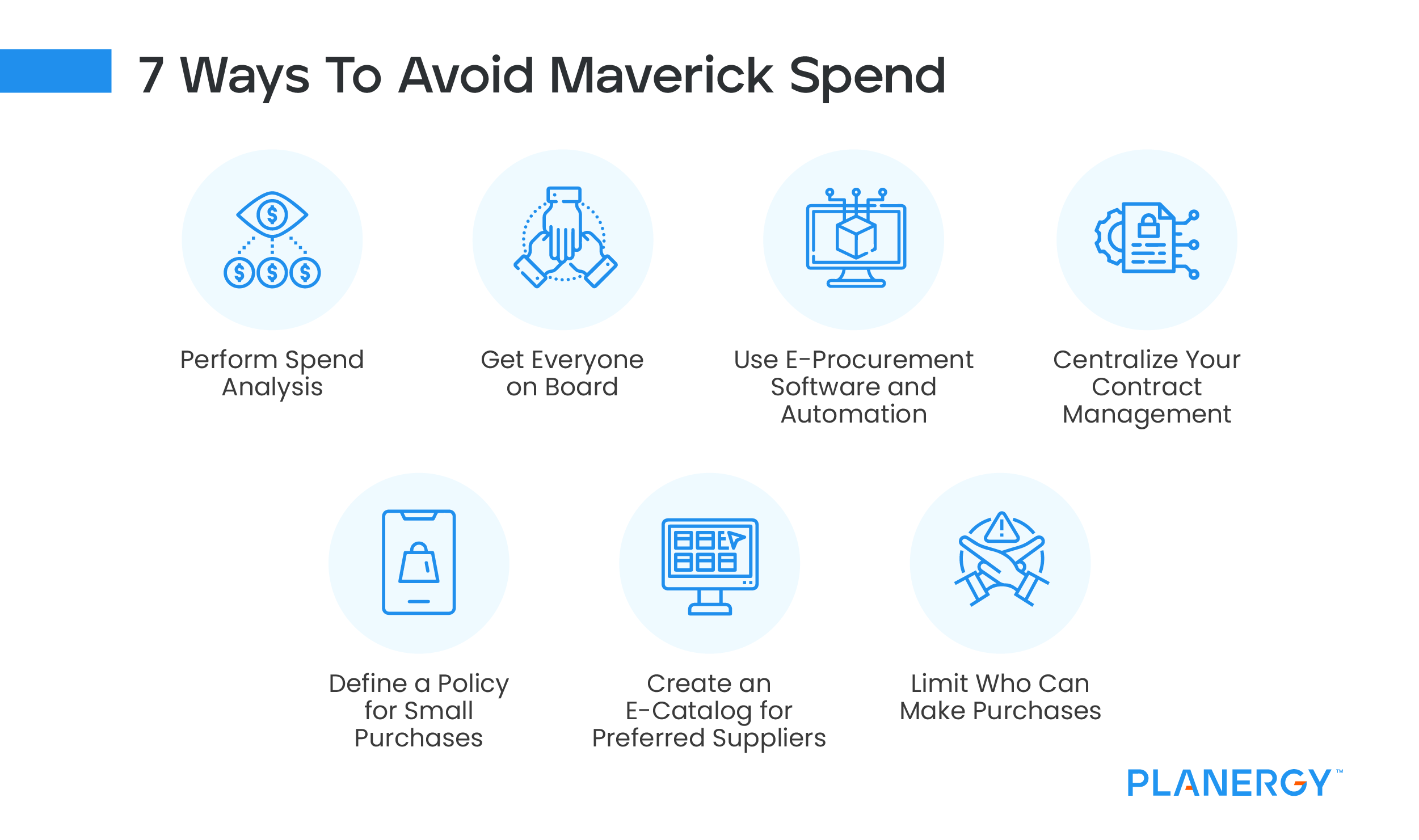With the proper policy, planning, and procurement process in place, maverick spending can be avoided. Of course, it can be avoided much easier with the help of procurement software that helps put those policies and processes in place, and enforces them.
Regardless of what system you use to manage your purchasing process, these are seven reliable ways your organization can avoid maverick spend.
-
Perform a Spend Analysis
Without a clear picture of both direct and indirect spend at all price levels, you won’t be able to identify the scope of the problem.
Performing a thorough spend analysis can uncover how much maverick spend is really going on, and where you most need to address the problem to create the most cost savings.
-
Get Everyone on Board
Without full support from internal stakeholders, any effort to curtail maverick spend can easily fail. Everyone needs to be on board, starting with executive leadership, or it will continue to eat away at the bottom line.
Take the time to identify the stakeholders at all levels. Engage them and explain how both they and the company will benefit from more effective procurement. Communicate expectations, address concerns, and provide frequent updates—then you’ll be on your way to a smooth transition.
-
Use E-Procurement Software and Automation
Everything from strategic sourcing to supplier management is easier with a centralized solution for procurement. The best procurement software integrates with your enterprise resource planning (ERP) system for a comprehensive solution without roadblocks, redundancies, and errors.
Purchasing systems can create easy-to-use portals for everything, including small tail spend purchases, which reduces the temptation to go outside of the established purchasing protocols while automating much of the tedious tasks.
Guided buying directs purchasers to buy your preferred suppliers where you have the most preferential agreed terms and can define an approved supplier list that stops orders happening from non-approved suppliers.
-
Centralize Your Contract Management
Granting your procurement department full access to contracts is essential to spend management. With all contract management under their supervision, they can easily find and eliminate conflicting or obsolete terms. Managing your contracts through e-procurement software makes this process much easier.
-
Define a Policy for Small Purchases
Allowing individuals to self-approve low value purchases in certain circumstances will ensure operations can proceed unhindered while maintaining control for more significant purchases. This should be defined in a purchasing policy.
Some companies will find using purchasing cards (p-cards) for purchases under a certain threshold can save time but these will still need to be monitored to ensure compliant behavior.
You can provide company credit cards to employees who frequently make purchases and use the data from your spend analysis to set a threshold. Any purchase for less than that threshold must be made on the card.
In addition to simplifying tracking, p-cards also eliminate the need for purchase orders and expense reports on items below the threshold. You’ll save on labor, and your procurement professionals can focus on larger priorities.
Some cards can even set limits for what spend categories they can be used for, and how much can be spent per transaction, day, or month.
-
Create an E-Catalog for Preferred Suppliers
Place your common low-cost tail spend purchases into an e-catalog for your staff to use, limiting selections to preferred suppliers. As more people use the system, you’ll be able to account for both routine and one-off buys—ensuring they become part of your managed spend, rather than maverick spend.
-
Limit Who Can Make Purchases
One of the most powerful and effective ways to control maverick spending is by limiting the number of people who can make purchases. Fewer employees authorized to make purchases means fewer headaches at every step of the P2P process.
Maverick spend is very much like the ‘death by a thousand cuts’ analogy. It can bleed a company dry over time as it quietly impacts the bottom line.
Investing in cutting maverick spending will reduce costs, improve accountability, and help keep your business riding high. Investing in a procurement software solution not only goes hand-in-hand with eliminating maverick spend, but also streamlining your entire operation.








